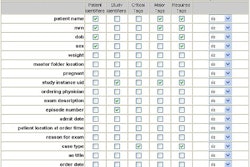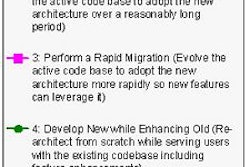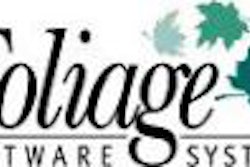SAN ANTONIO - It's certainly helpful to eliminate film when converting to digital image management. But efficiency-hungry radiology operations still face the thorny issue of handling the paper documents that flow through the unit every day.
In a talk at PACS 2003: Integrating the Healthcare Enterprise, Dr. Neal Rutledge, chairman of the IT committee at the Austin Radiological Association (ARA) in Austin, TX, discussed issues related to digitization of documents in a PACS environment. ARA is a 54-person private-practice radiology group that performed 984,000 exams in 2002.
The ARA employs an enterprise-wide digital image management system and generates more than 10,000 documents a day. Because enterprise reading requires real-time access to clinical documents, the ARA wanted to improve availability while decreasing costs, Rutledge said.
According to Rutledge, documents can be classified into three types:
- Historical -- prescription, consent forms, etc.
- Clinical -- ultrasound diagrams, history/allergies, sedation notes, etc.
- Business -- insurance card, billing info, EOB, etc.
A paper-based system is expensive, Rutledge said. After evaluating all direct and indirect costs (including couriers, storage costs, etc.), the ARA calculated that the group spends more than $250,000 a year to handle documents.
To determine whether it would be cost-effective to scan its documents, the ARA discovered that it took approximately 30 seconds to scan a document using a single-sheet flat scanner, and approximately 15 seconds for a multifeed scanner. Adding a document to the Synapse PACS software (Fujifilm Medical Systems USA, Stamford, CT) took approximately 40 seconds, with retrieval time of approximately 15 seconds.
In the traditional paper-based environment, filing time took approximately 40 seconds, with a retrieval and fax time of approximately 240 seconds. Assuming five documents scanned multiplied by 55-70 seconds and a retrieval time of 15 seconds, document scanning fell short.
"At least for us, right now, paper is cheaper," Rutledge said.
In exams with an assist from a technologist and/or physician assistant -- such as ultrasound, fluoroscopy, and special studies such as hysterosalpingiogram -- digital availability of clinical documents saves the technologist three to five minutes per exam by not having to wait to talk to the physician. In addition, exams can be read by the first available radiologist, therefore increasing turnaround, Rutledge said.
The ARA determined that digitizing of legacy paper was not cost-effective. However, it's valuable to digitize clinical documents, Rutledge said.
For historical and business documents, bar-code and high-speed batch scanning would need to be employed, he said. At ARA, 25% of insurance claims are appealed each year, resulting in the need for 13,952 historical/business documents to be pulled from the archives. Secondary claims necessitated 27,600 pulls, Rutledge said.
Security
Of course, it's important to keep in mind security provisions. Access control functionality should be in place to allow personnel access only to appropriate documents, he said. Audit trails help to document compliance with the Health Insurance Portability and Accountability Act (HIPAA), and written company procedures must be developed, Rutledge said.
Overall, document scanning provides reduction of paper storage and elimination of manual paper movement, such as a courier service and routing management, he said. It also yields improved accessibility of information and cost savings.
Rutledge also suggests focusing on eliminating the flow of paper instead of paper itself.
"Paper is cheap, and it's hard to do better than just paper," he said.
In addition, utilizing bar codes for MRN/accession numbers is necessary for digitization of little-accessed historical documents, he said.
"If you want to get those in electronically, that's what you've got to do," Rutledge said.
Rutledge recommended selecting vendors that are proven in the marketplace, and have successful implementations employing document scanning, he said.
"You definitely want to see what solution they have for paperwork," he said. "You can be filmless but if you still have this legacy paper going around, you're still stuck when you're trying to work out an enterprise solution."
By Erik L. RidleyAuntMinnie.com staff writer
March 17, 2003
Related Reading
PACS displays raise myriad issues, March 14, 2003
ARA adopts PACS for service, competitive reasons, April 26, 2002
Copyright © 2003 AuntMinnie.com



















